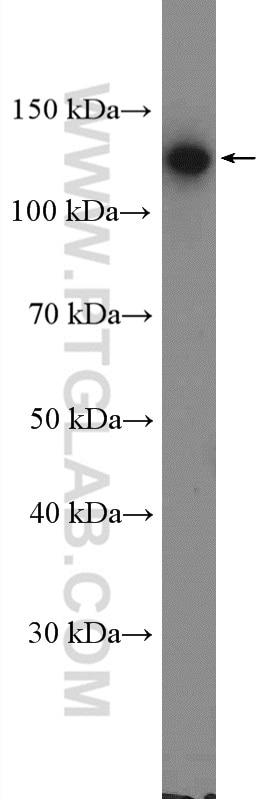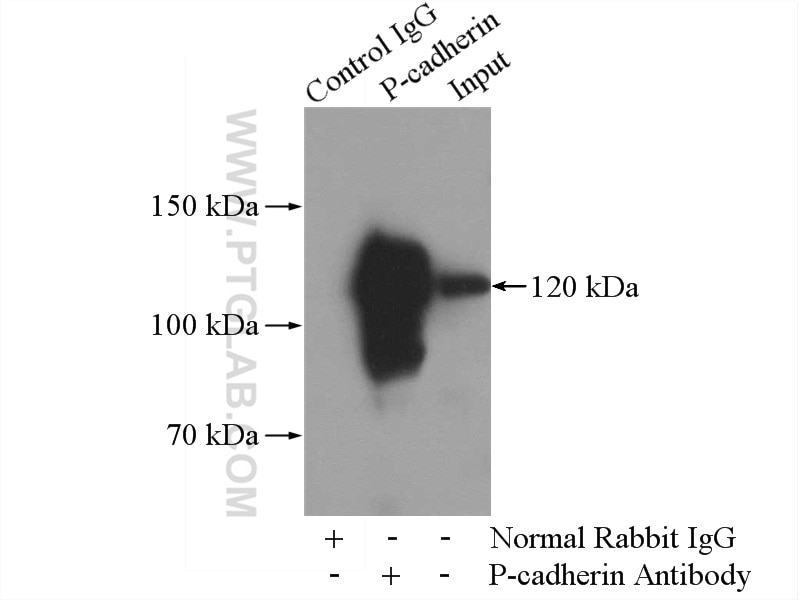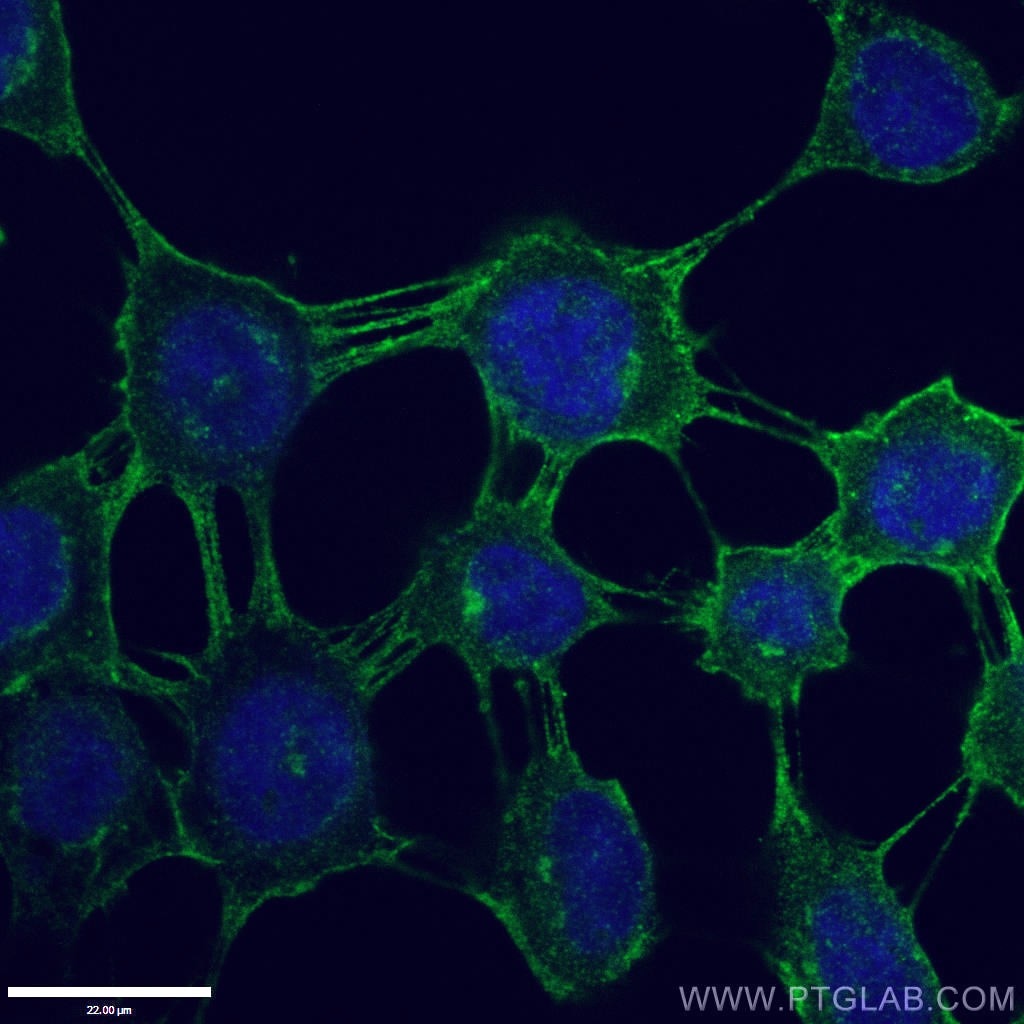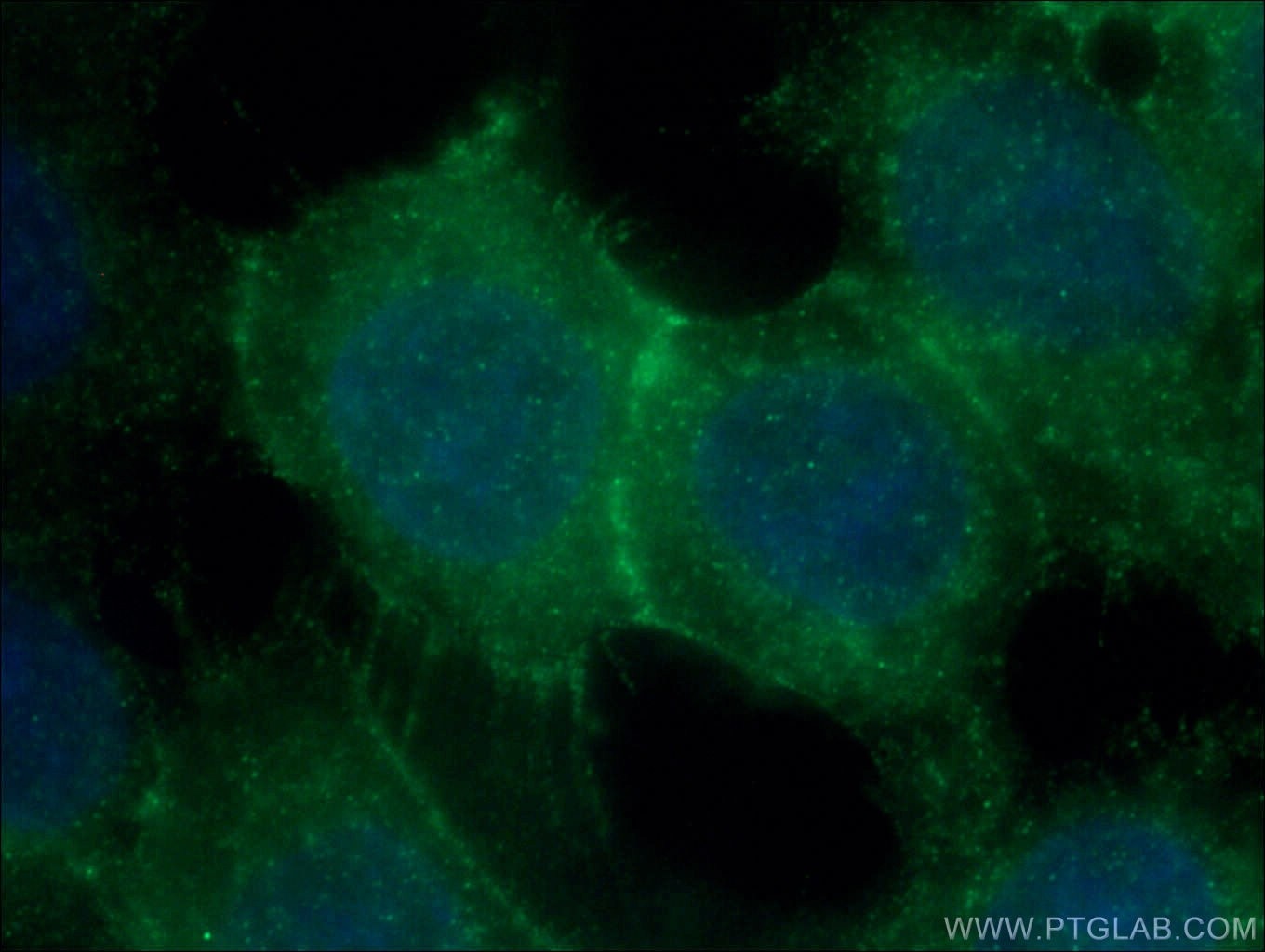P-cadherin Polyklonaler Antikörper
P-cadherin Polyklonal Antikörper für WB, IF/ICC, IP, ELISA
Wirt / Isotyp
Kaninchen / IgG
Getestete Reaktivität
human, Maus, Ratte
Anwendung
WB, IHC, IF/ICC, IP, ELISA
Konjugation
Unkonjugiert
Kat-Nr. : 13773-1-AP
Synonyme
Galerie der Validierungsdaten
Geprüfte Anwendungen
| Erfolgreiche Detektion in WB | A431-Zellen |
| Erfolgreiche IP | A431-Zellen |
| Erfolgreiche Detektion in IF/ICC | A431-Zellen |
Empfohlene Verdünnung
| Anwendung | Verdünnung |
|---|---|
| Western Blot (WB) | WB : 1:500-1:2000 |
| Immunpräzipitation (IP) | IP : 0.5-4.0 ug for 1.0-3.0 mg of total protein lysate |
| Immunfluoreszenz (IF)/ICC | IF/ICC : 1:50-1:500 |
| It is recommended that this reagent should be titrated in each testing system to obtain optimal results. | |
| Sample-dependent, check data in validation data gallery | |
Veröffentlichte Anwendungen
| WB | See 6 publications below |
| IHC | See 3 publications below |
| IF | See 3 publications below |
Produktinformation
13773-1-AP bindet in WB, IHC, IF/ICC, IP, ELISA P-cadherin und zeigt Reaktivität mit human, Maus, Ratten
| Getestete Reaktivität | human, Maus, Ratte |
| In Publikationen genannte Reaktivität | human, Maus, Ratte |
| Wirt / Isotyp | Kaninchen / IgG |
| Klonalität | Polyklonal |
| Typ | Antikörper |
| Immunogen | P-cadherin fusion protein Ag4758 |
| Vollständiger Name | cadherin 3, type 1, P-cadherin (placental) |
| Berechnetes Molekulargewicht | 829 aa, 91 kDa |
| Beobachtetes Molekulargewicht | 120 kDa |
| GenBank-Zugangsnummer | BC041846 |
| Gene symbol | P-cadherin |
| Gene ID (NCBI) | 1001 |
| Konjugation | Unkonjugiert |
| Form | Liquid |
| Reinigungsmethode | Antigen-Affinitätsreinigung |
| Lagerungspuffer | PBS mit 0.02% Natriumazid und 50% Glycerin pH 7.3. |
| Lagerungsbedingungen | Bei -20°C lagern. Nach dem Versand ein Jahr lang stabil Aliquotieren ist bei -20oC Lagerung nicht notwendig. 20ul Größen enthalten 0,1% BSA. |
Hintergrundinformationen
Cadherins are a family of transmembrane glycoproteins that mediate calcium-dependent cell-cell adhesion and play an important role in the maintenance of normal tissue architecture. P-cadherin (placental cadherin), also known as CDH3 (cadherin 3), is a classical member of the cadherin superfamily which also include E-, N-, R-, and B-cadherins. Aberrant expression of P-cadherin has been reported in many cancers, including breast, gastric, endometrial, ovarian, and prostate cancer.
Protokolle
| Produktspezifische Protokolle | |
|---|---|
| WB protocol for P-cadherin antibody 13773-1-AP | Protokoll herunterladen |
| IF protocol for P-cadherin antibody 13773-1-AP | Protokoll herunterladen |
| IP protocol for P-cadherin antibody 13773-1-AP | Protokoll herunterladen |
| Standard-Protokolle | |
|---|---|
| Klicken Sie hier, um unsere Standardprotokolle anzuzeigen |
Publikationen
| Species | Application | Title |
|---|---|---|
Nat Commun Symmetry breaking of tissue mechanics in wound induced hair follicle regeneration of laboratory and spiny mice. | ||
Mol Ther Nucleic Acids Inhibition of the lncRNA MIAT prevents podocyte injury and mitotic catastrophe in diabetic nephropathy. | ||
Aging (Albany NY) Transcriptional dysregulation of TRIM29 promotes colorectal cancer carcinogenesis via pyruvate kinase-mediated glucose metabolism. | ||
Front Oncol Screening and Identification of Key Biomarkers of Gastric Cancer: Three Genes Jointly Predict Gastric Cancer. | ||
Int J Biol Sci KLF4-Mediated CDH3 Upregulation Suppresses Human Hepatoma Cell Growth and Migration via GSK-3β Signaling. | ||
Dev Dyn Denticleless E3 ubiquitin protein ligase (DTL) maintains the proliferation and differentiation of epidermis and hair follicles during skin development |





